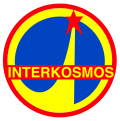| COSPAR ID | 1988-048A |
|---|---|
| SATCAT no. | 19204 |
| Mission duration | 91 days, 10 hours, 46 minutes, 25 seconds [1] |
| Orbits completed | ~1,475 |
| Spacecraft properties | |
| Spacecraft | Soyuz 7K-STM No. 55 |
| Spacecraft type | Soyuz-TM |
| Manufacturer | NPO Energia |
| Launch mass | 7,000 kilograms (15,000 lb) |
| Crew | |
| Crew size | 3 up 2 down |
| Launching | Anatoly Solovyev Viktor Savinykh Aleksandr Aleksandrov |
| Landing | Vladimir Lyakhov Abdul Ahad Mohmand |
| Callsign | Родни́к (Rodnik- Spring) |
| Start of mission | |
| Launch date | 7 June 1988, 14:03:13 UTC [1] |
| Rocket | Soyuz-U2 |
| Launch site | Baikonur 1/5 |
| End of mission | |
| Landing date | 7 September 1988, 00:49:38 UTC |
| Landing site | 202 kilometres (126 mi) SE of Dzhezkazgan |
| Orbital parameters | |
| Reference system | Geocentric |
| Regime | Low Earth |
| Perigee altitude | 173 kilometres (107 mi) |
| Apogee altitude | 241 kilometres (150 mi) |
| Inclination | ~51.6 degrees |
| Period | 88.6 minutes |
| Docking with Mir [2] | |
| Docking date | 9 June 1988, 15:57:10 UTC |
| Undocking date | 5 September 1988, 23:54:57 UTC |
 Soyuz programme (Crewed missions) | |
Soyuz TM-5 was a crewed Soyuz spaceflight to Mir. It was launched on June 7, 1988, carrying the Mir EP-2 mission's three-person crew. This week-long stay on Mir occurred during the third long-duration Mir expedition, Mir EO-3. The crew of EP-2 returned to Earth aboard Soyuz TM-4, while the TM-5 spacecraft remained docked to Mir, acting as the lifeboat for the long-duration crew. On September 7, 1988, the TM-5 spacecraft undocked from Mir, and landed Mir EP-3 mission's two-person visiting crew. The de-orbit procedures for Soyuz were revised after this flight, as multiple issues almost prevented the descent module's safe de-orbit and landing.


